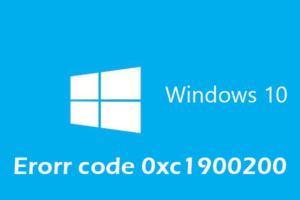-
Table of Contents
“Big Head” ransomware: Deceptive Windows Update, devastating consequences.
“Big Head” ransomware is a malicious software that disguises itself as a Windows Update to deceive users.
How Big Head Ransomware Exploits Windows Update to Deceive Users
Big Head ransomware has emerged as a new threat in the cybersecurity landscape, employing a clever tactic to deceive unsuspecting users. This malicious software disguises itself as a legitimate Windows Update, exploiting the trust users place in these updates to gain access to their systems. By mimicking the appearance and behavior of a genuine update, Big Head ransomware tricks users into unknowingly installing the malware, leading to devastating consequences.
The rise of ransomware attacks has been a cause for concern among individuals and organizations alike. Cybercriminals are constantly evolving their tactics to bypass security measures and exploit vulnerabilities. In the case of Big Head ransomware, the attackers have taken advantage of the trust users have in Windows Update, a feature that is widely recognized as essential for maintaining system security.
The deception begins with the appearance of a pop-up notification that closely resembles the genuine Windows Update dialog box. This carefully crafted imitation creates a sense of urgency, urging users to install the update immediately to protect their systems from potential threats. Unbeknownst to the user, this is the first step towards falling victim to the ransomware.
Once the user clicks on the deceptive update prompt, the malware begins to infiltrate the system. It starts by disabling security software and establishing a foothold within the system’s infrastructure. This initial compromise allows the ransomware to gain control over critical files and encrypt them, rendering them inaccessible to the user. The attackers then demand a ransom in exchange for the decryption key, effectively holding the victim’s data hostage.
What makes Big Head ransomware particularly insidious is its ability to evade detection. By masquerading as a legitimate Windows Update, it bypasses many security measures that would typically flag suspicious activity. This sophisticated camouflage allows the malware to remain undetected for extended periods, exacerbating the damage it can inflict.
To further deceive users, Big Head ransomware employs social engineering techniques. It leverages psychological manipulation to exploit human vulnerabilities, such as fear and urgency. By capitalizing on the trust users place in Windows Update, the attackers increase the likelihood of successful infection. This combination of technical sophistication and psychological manipulation makes Big Head ransomware a formidable threat.
Protecting against Big Head ransomware requires a multi-layered approach. First and foremost, users must exercise caution when encountering any update prompts. Verifying the authenticity of the update through official channels, such as the Windows Update settings within the operating system, is crucial. Additionally, maintaining up-to-date security software and regularly backing up important files can mitigate the impact of a potential ransomware attack.
Furthermore, organizations should invest in employee education and awareness programs to ensure that individuals are equipped with the knowledge to identify and respond appropriately to potential threats. By fostering a culture of cybersecurity awareness, organizations can significantly reduce the risk of falling victim to Big Head ransomware and other similar attacks.
In conclusion, Big Head ransomware represents a new breed of cyber threats that exploit the trust users place in Windows Update. By masquerading as a legitimate update, this malware deceives users into unknowingly installing the ransomware, leading to devastating consequences. Combating this threat requires a combination of technical measures, such as verifying the authenticity of updates, and fostering a culture of cybersecurity awareness. Only through a comprehensive approach can individuals and organizations protect themselves from the insidious tactics employed by Big Head ransomware and other similar threats.
Understanding the Tactics of Big Head Ransomware: Faking Windows Update
Big Head ransomware has emerged as a significant threat in the cybersecurity landscape, employing a clever tactic to deceive unsuspecting users. This malicious software disguises itself as a Windows Update, exploiting the trust users place in these regular system updates. By mimicking a legitimate Windows Update, Big Head ransomware gains access to a user’s system, encrypts their files, and demands a ransom for their release. Understanding the tactics employed by this ransomware is crucial in order to protect oneself from falling victim to its deceitful ploy.
The first step in comprehending the workings of Big Head ransomware is to understand how it gains entry into a user’s system. Typically, users are accustomed to receiving notifications for Windows Updates, which are essential for maintaining the security and functionality of their operating system. Cybercriminals behind Big Head ransomware exploit this familiarity by creating a fake update notification that appears genuine at first glance. This notification often includes the Windows logo, a seemingly legitimate update description, and even a progress bar to mimic the installation process. These elements are carefully designed to deceive users into believing that they are installing a legitimate Windows Update.
Once the user falls into the trap and initiates the installation process, the ransomware gains access to their system. It starts by disabling security features and antivirus software, ensuring that it can operate undetected. Big Head ransomware then proceeds to encrypt the user’s files, rendering them inaccessible. This encryption process is often swift and efficient, leaving the user with little time to react or prevent the damage. Once the files are encrypted, a ransom note is displayed, demanding payment in exchange for the decryption key.
To make matters worse, Big Head ransomware is known for its ability to spread across networks, infecting multiple devices within an organization. This capability poses a significant threat to businesses, as it can lead to widespread data loss and operational disruptions. The ransomware can exploit vulnerabilities in network security, allowing it to move laterally and infect other devices connected to the same network. This highlights the importance of implementing robust security measures and regularly updating software to prevent such attacks.
Protecting oneself from Big Head ransomware requires a multi-layered approach. Firstly, it is crucial to remain vigilant and skeptical of any unexpected update notifications. Verifying the authenticity of the update through official channels, such as the Windows Update settings or the Microsoft website, is essential. Additionally, maintaining up-to-date antivirus software and regularly backing up important files can mitigate the impact of a potential ransomware attack. Educating employees about the risks associated with fake update notifications and the importance of adhering to security protocols is also crucial in preventing the spread of Big Head ransomware within an organization.
In conclusion, Big Head ransomware poses a significant threat by exploiting users’ trust in Windows Updates. By disguising itself as a legitimate update, this ransomware gains access to a user’s system, encrypts their files, and demands a ransom for their release. Understanding the tactics employed by Big Head ransomware is essential in order to protect oneself from falling victim to its deceitful ploy. By remaining vigilant, implementing robust security measures, and educating employees, individuals and organizations can mitigate the risks associated with this malicious software.
Protecting Yourself from Big Head Ransomware’s Windows Update Impersonation
Big Head ransomware has recently emerged as a significant threat to computer users worldwide. This malicious software disguises itself as a Windows Update, tricking unsuspecting users into downloading and installing it. Once installed, Big Head ransomware encrypts the victim’s files, rendering them inaccessible until a ransom is paid. To protect yourself from this insidious threat, it is crucial to understand how the ransomware operates and take necessary precautions.
The first step in safeguarding your computer against Big Head ransomware is to stay informed about the latest cybersecurity threats. By staying up to date with the latest news and developments in the field, you can better understand the tactics employed by cybercriminals and take appropriate measures to protect yourself. Regularly reading reputable technology blogs and subscribing to cybersecurity newsletters can provide valuable insights into emerging threats like Big Head ransomware.
One of the most effective ways to protect yourself from Big Head ransomware is to ensure that your operating system and all software are up to date. Cybercriminals often exploit vulnerabilities in outdated software to gain unauthorized access to systems. By regularly updating your operating system and software, you can patch these vulnerabilities and reduce the risk of falling victim to ransomware attacks.
It is also crucial to exercise caution when downloading and installing software or updates. Big Head ransomware often disguises itself as a legitimate Windows Update, making it difficult to distinguish between the real and fake updates. To protect yourself, only download software and updates from trusted sources. Avoid clicking on suspicious links or downloading files from unknown websites, as these are common vectors for ransomware infections.
Another essential step in protecting yourself from Big Head ransomware is to maintain robust antivirus and antimalware software on your computer. These security tools can detect and remove malicious software, including ransomware, before it can cause any harm. Ensure that your antivirus software is regularly updated to detect the latest threats effectively.
In addition to antivirus software, it is crucial to regularly back up your files. Ransomware attacks like Big Head can encrypt your files, making them inaccessible until a ransom is paid. By regularly backing up your files to an external hard drive or cloud storage, you can restore your data in the event of a ransomware attack without having to pay the ransom. Remember to disconnect your backup device from your computer after the backup is complete to prevent it from being compromised by ransomware.
Furthermore, practicing safe browsing habits can significantly reduce the risk of falling victim to Big Head ransomware. Avoid visiting suspicious websites or clicking on pop-up ads, as these can lead to malware infections. Be cautious when opening email attachments, especially if they come from unknown senders or contain unusual file types. Cybercriminals often use phishing emails to distribute ransomware, so it is essential to exercise caution and verify the legitimacy of any email attachments before opening them.
In conclusion, protecting yourself from Big Head ransomware’s Windows Update impersonation requires a combination of vigilance and proactive measures. Staying informed about the latest cybersecurity threats, keeping your operating system and software up to date, exercising caution when downloading software or updates, maintaining robust antivirus software, regularly backing up your files, and practicing safe browsing habits are all crucial steps in safeguarding your computer against this insidious threat. By implementing these measures, you can significantly reduce the risk of falling victim to Big Head ransomware and other similar attacks.
Unveiling the Dangers of Big Head Ransomware’s Windows Update Deception
Big Head ransomware has recently emerged as a significant threat in the cybersecurity landscape, employing a clever tactic to deceive unsuspecting users. This malicious software disguises itself as a Windows Update, exploiting the trust users place in these regular system updates. By mimicking a legitimate Windows Update, Big Head ransomware gains access to users’ systems, encrypting their files and demanding a ransom for their release. This article aims to shed light on the dangers posed by Big Head ransomware’s Windows Update deception, highlighting the need for heightened vigilance and robust security measures.
The rise of ransomware attacks has been a cause for concern among individuals and organizations alike. Cybercriminals are constantly evolving their tactics to bypass security measures and exploit vulnerabilities. Big Head ransomware’s approach is particularly insidious, as it capitalizes on users’ trust in Windows Updates, which are typically seen as essential for maintaining system security and performance.
When users encounter a pop-up notification claiming to be a Windows Update, they are likely to assume it is legitimate and proceed with the installation. However, in the case of Big Head ransomware, this seemingly harmless action leads to dire consequences. Once the ransomware gains access to the system, it begins encrypting files, rendering them inaccessible to the user. This can have devastating effects for individuals and businesses, as valuable data may be permanently lost or compromised.
The deceptive nature of Big Head ransomware’s Windows Update disguise makes it challenging for users to differentiate between genuine updates and malicious ones. This highlights the importance of educating users about the potential risks and warning signs associated with such attacks. Users should be cautious when encountering unexpected or unsolicited update notifications, especially if they appear outside of the regular update schedule.
To protect against Big Head ransomware and similar threats, it is crucial to implement robust security measures. Regularly updating antivirus software and operating systems can help detect and prevent the installation of malicious software. Additionally, maintaining backups of important files on separate storage devices or cloud platforms can mitigate the impact of a ransomware attack.
Organizations should also consider implementing multi-factor authentication and access controls to limit the potential damage caused by ransomware. By restricting user privileges and monitoring network activity, suspicious behavior can be detected and addressed promptly. Furthermore, conducting regular security audits and penetration testing can help identify vulnerabilities and strengthen overall cybersecurity defenses.
In conclusion, the emergence of Big Head ransomware and its deceptive Windows Update disguise underscores the need for heightened vigilance in the face of evolving cyber threats. Users must be cautious when encountering unexpected update notifications and should verify their authenticity before proceeding with installation. Implementing robust security measures, such as regular software updates, backups, and access controls, is essential to protect against ransomware attacks. By staying informed and proactive, individuals and organizations can mitigate the risks posed by Big Head ransomware and safeguard their valuable data.
Q&A
1. What is “Big Head” ransomware?
“Big Head” ransomware is a type of malicious software that infects computers and encrypts files, demanding a ransom payment from the user to regain access to their files.
2. How does “Big Head” ransomware deceive users?
“Big Head” ransomware disguises itself as a Windows Update notification, tricking users into believing it is a legitimate software update. Once users click on the notification, the ransomware is installed on their system.
3. What does “Big Head” ransomware do once it infects a computer?
Once installed, “Big Head” ransomware encrypts the user’s files, making them inaccessible. It then displays a ransom note, demanding a payment in exchange for the decryption key needed to restore the files.
4. How can users protect themselves from “Big Head” ransomware?
To protect against “Big Head” ransomware and similar threats, users should regularly update their operating systems and software from official sources. It is also crucial to exercise caution when clicking on any update notifications and to have reliable antivirus software installed. Regularly backing up important files to an external storage device or cloud service is also recommended.In conclusion, the “Big Head” ransomware employs a deceptive tactic by disguising itself as a Windows Update to deceive users. This malicious software aims to trick individuals into unknowingly installing the ransomware, leading to potential data loss and financial harm. It is crucial for users to remain vigilant and cautious while downloading and installing any software updates, ensuring they are from legitimate sources to avoid falling victim to such ransomware attacks.







![[Solved]: “Error Code 0xC004F050” in Windows 11 in No Time](https://www.tipsbin.net/wp-content/uploads/2023/08/8e64f519d2390bfc001a41744be2cbd4-300x199.jpeg)

